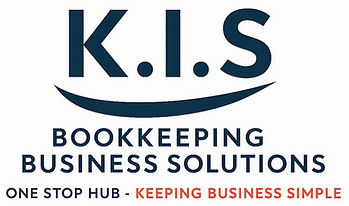Essential Steps for Employing New Staff Effectively
- nicole20693
- Oct 24
- 4 min read
Hiring your first employee is an exciting milestone — but it also comes with important legal, financial, and compliance responsibilities. Getting it right from the start helps protect your business, builds trust with your new team, and ensures you stay on the right side of the law.
Here’s a step-by-step guide to help small business owners confidently navigate the hiring process.
Determine Your Business Needs
Before advertising a role, take the time to define what your business truly needs.
Ask yourself:
What tasks need to be done regularly?
Is this a full-time, part-time, or casual role?
Do I need an employee or would a contractor be more suitable?
Clearly defining the role helps you hire the right person and prevents costly hiring mistakes.
Understand Employment Awards and Pay Rates
Every employee in Australia is covered by the National Employment Standards (NES) and most are also covered by a Modern Award.
These outline:
Minimum pay rates
Hours of work and breaks
Overtime and penalty rates
Leave entitlements
Make sure you identify the correct award and classification before making an offer. Getting this wrong can lead to back-pay issues and Fair Work claims.

Screen Applications
After you’ve gathered applications, it’s time to screen them. This step is crucial in narrowing down your pool of candidates to those who best meet your criteria.
Review resumes and cover letters carefully, looking for relevant experience and skills. Consider using an applicant tracking system (ATS) to streamline this process. An ATS can help you filter applications based on specific keywords, making it easier to identify top candidates.
Conduct Interviews
Once you have a shortlist of candidates, the next step is to conduct interviews. This is your opportunity to assess not only the candidates’ qualifications but also their fit within your organization.
Prepare a set of standardized questions to ensure consistency across interviews. Ask about their previous experiences, problem-solving abilities, and how they handle challenges. Additionally, consider incorporating behavioral interview techniques, which can provide insight into how candidates have responded to situations in the past.
Assess Skills
In addition to interviews, it’s beneficial to assess candidates’ skills through practical tests or assessments. This can be particularly important for roles that require specific technical abilities.
For example, if you’re hiring for a programming position, consider asking candidates to complete a coding challenge. This not only evaluates their skills but also gives you a glimpse into their thought process and problem-solving approach.
Check References
Before making a final decision, it’s essential to check references. This step can provide valuable insights into a candidate’s work ethic, reliability, and interpersonal skills.
Reach out to previous employers or colleagues to gather feedback on the candidate’s performance. Ask specific questions about their strengths and areas for improvement. This information can help you make a more informed hiring decision.

Make an Offer
Once you’ve identified the right candidate, it’s time to make an offer. Be clear about the terms of employment, including salary, benefits, and any other relevant details.
Consider discussing the offer with the candidate to address any questions or concerns they may have. This can help ensure that both parties are on the same page and can lead to a smoother onboarding process.
Set Up Your Employer Obligations
Once you decide to employ someone, there are several legal obligations to meet:
ABN and TFN: Ensure your business details are current.
PAYG Withholding: Register with the ATO to withhold tax from employee wages.
Superannuation: Choose a compliant default fund and pay super on time.
Workers’ Compensation Insurance: Protects both you and your employees if they’re injured at work.
Fair Work Information Statement: Must be provided to all new employees.
Draft a Compliant Employment Contract
A written employment contract should clearly outline:
Job title and duties
Pay rate and classification under the award
Hours of work and conditions
Probation period
Notice and termination terms
A strong contract protects both the employer and employee and helps avoid disputes down the track.
Onboarding and Workplace Policies
Once you’ve hired the right person, onboarding sets the tone for their success.
Provide:
Workplace policies and procedures (e.g. WHS, code of conduct, leave requests).
Training and safety inductions.
Clear communication about expectations and performance reviews.
A structured onboarding process helps employees feel supported and confident from day one.
Payroll and Record-Keeping
Accurate payroll management is essential for compliance.
Employers must:
Use Single Touch Payroll (STP) to report wages and super to the ATO.
Keep detailed records of hours, leave, and pay for seven years.
Issue payslips within one working day of payment.
This is where professional support can save time and reduce risk. K.I.S Bookkeeping & Business Solutions can help set up compliant payroll systems, manage superannuation, and ensure your reporting is accurate and up to date.
Stay Compliant and Keep Reviewing
Employment laws and award rates change regularly. Review your payroll setup and employment practices at least once a year to stay compliant. Partnering with experts like K.I.S Bookkeeping & Business Solutions ensures you stay ahead of changes and focus on what matters most — running your business.
Final Thoughts
Hiring employees is a big step in growing your business, but it doesn’t have to be stressful. With the right systems, contracts, and professional support, you can build a compliant, efficient, and happy workplace.
At K.I.S Bookkeeping & Business Solutions, we take care of payroll, compliance, and HR setup so you can focus on growing your business. If you’re ready to hire with confidence, get in touch today.






Comments